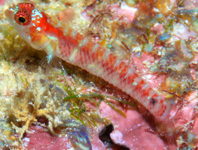Abstract
Chironomus Meigen (Diptera, Chironomidae) larvae are usually the largest sediment-burrowing chironomids, and as such often constitute a major part of the freshwater infaunal biomass. However, use of this genus in ecological, environmental and paleoecological studies is hampered by the fact that Chironomus larvae are difficult to identify to species because the larvae of many species are morphologically similar. We used a combination of morphological, cytological and genetic techniques to distinguish Chironomus larvae collected from 31 water bodies located in eastern Canada, producing 17 distinguishable groupings. These groups of larvae were ultimately identified as belonging to 14 known species (C. anthracinus, C. bifurcatus, C. cucini, C. decorus-group sp. 2, C. dilutus, C. entis, C. frommeri, C. harpi, C. maturus, C. nr. atroviridis (sp. 2i), C. ochreatus, C. plumosus, C. staegeri and C. ‘tigris’) and three other species that remain unidentified (C. sp. NAI-III). No single approach served to delimit and identify larvae of all 17 Chironomus species that we collected. Although we expected that morphological criteria alone would be insufficient, our results suggest that DNA barcoding, using either the mitochondrial cox1 or the nuclear gb2β gene, was also inadequate for separating some Chironomus species. Thus we suggest that multiple approaches will often be needed to correctly identify Chironomus larvae to species.

